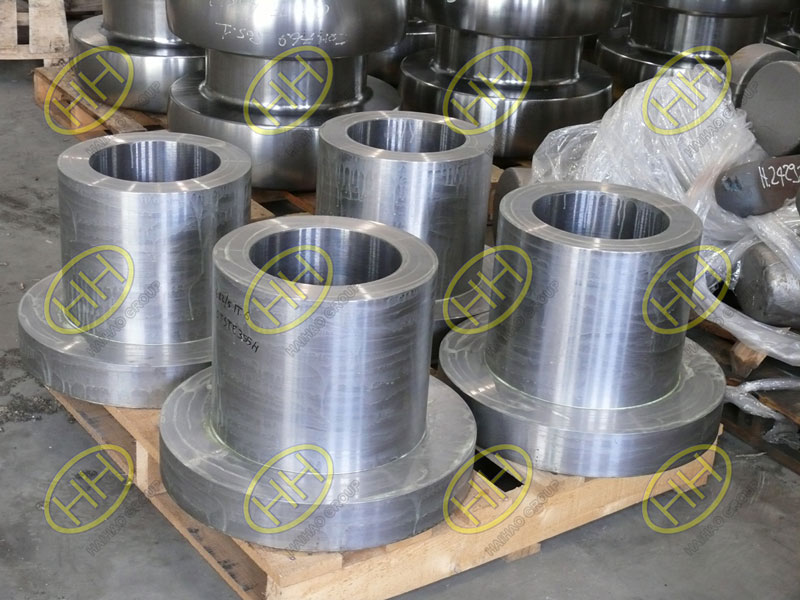Introduction of high quality austenitic stainless steel 254SMO
254SMO is an austenitic stainless steel known for its high resistance to pitting and crevice corrosion, thanks to its high molybdenum content. This material is specifically developed for use in environments containing halides, such as seawater, where corrosion resistance is critical.

ANSI standard stainless steel long weld neck flanges
Key Properties of 254SMO
Density: 8.1 g/cm³
Melting Point: 1320°C
Hardness: 182-223 HB
Chemical Composition
254SMO contains the following chemical elements:
| Carbon (C) | Manganese (Mn) | Nickel (Ni) | Silicon (Si) | Phosphorus (P) | Sulfur (S) | Chromium (Cr) | Copper (Cu) | Molybdenum (Mo) |
| ≤0.02% | ≤1.00% | 17.5-18.5% | ≤0.8% | ≤0.03% | ≤0.01% | 19.5-20.5% | 0.5-1.0% | 6.0-6.5% |
This precise composition makes it highly resistant to localized corrosion. The high levels of molybdenum (Mo) provide exceptional protection against pitting and crevice corrosion, especially in harsh environments such as seawater and chemical processing involving halides.
International Standards
UNS: S31254
DIN/EN: 1.4547
ASTM: A280
ASME: SA-240
Application Fields
254SMO is used in a variety of industries due to its excellent corrosion resistance and mechanical properties:
Marine Industry: Suitable for offshore structures, seawater desalination, aquaculture, and heat exchangers in marine environments.
Environmental Sector: Flue gas desulfurization (FGD) units in thermal power plants and wastewater treatment facilities.
Energy Sector: Nuclear power generation, coal utilization projects, and tidal power generation.
Petrochemical Industry: Refining processes and chemical equipment that require resistance to corrosive environments.
Food Industry: Salt production, soy sauce brewing, and other applications where high corrosion resistance is essential.
High Chloride Environments: Pulp and paper industry for bleaching equipment, and other systems exposed to high chloride concentrations.
High-Temperature Resistance
Superior Crevice Corrosion Resistance: Extensive field testing and practical applications have shown that 254SMO maintains excellent resistance to crevice corrosion in seawater, even at elevated temperatures—an ability that few stainless steels possess.
Acidic and Oxidative Resistance: 254SMO’s corrosion resistance in acidic and halide-rich environments, such as those required in pulp bleaching, rivals that of the most corrosion-resistant nickel-based and titanium alloys.
High Strength: Due to its high nitrogen content, 254SMO exhibits greater mechanical strength than other austenitic stainless steels, offering high ductility, impact resistance, and excellent weldability.
Annealing and Surface Characteristics: The high molybdenum content results in a higher oxidation rate during annealing, which may lead to a rougher surface post-pickling. However, this does not negatively impact the alloy’s corrosion resistance.
254SMO’s unique combination of corrosion resistance, mechanical properties, and versatility make it an indispensable material in various demanding environments, positioning it as a strong alternative to nickel and titanium alloys. As technology advances and engineering demands increase, 254SMO is expected to have a broader application, contributing significantly to industrial development.

